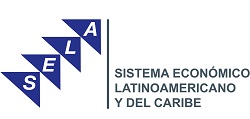BACKGROUND
The orange economy makes up a classification that includes a set of productive sectors associated with visual arts, performing arts and the dissemination of the cultural and historical wealth of peoples. Specifically, sculpture, painting, photography, music, crafts, design, theatre, dance, cuisine and traditional festivals are an example of activities considered in this economic branch.
According to the recognized expert in this subject area, John Howkins, “orange activities” accounted for 6.1% of world GDP in 2005, and their dynamism has intensified exponentially with the support of digitization and information and communications technologies (ICTs). In addition, these sectors have been characterized by their capacity for resilience during adverse exogenous events, which enabled them to report a faster recovery after the global financial crisis in 2009 and have emerged as an alternative in economic diversification processes.
In essence, these cultural and creative industries have an interconnected offer that works in a dynamics of clusters with strong productive articulations capable of stimulating activities, such as tourism, manufacturing, transport and trade. They also offer great opportunities for the materialization and strengthening of regional integration, expanding cultural and trade links through the exchange of creative contents.
However, to ensure full exploitation of their potential, it is necessary to advance in multiple aspects of public actions, in order to build a strong network of focused support and promote citizen awareness for improved performance. In this connection, the development of a reliable statistical information system will be essential, through mapping, satellite accounts and monitoring indicators, to gain knowledge about its composition, location and real contribution to economy and employment.
At the institutional level, the creation of national and regional legal instruments and entities is required to encourage and protect this sector's productive activity. Thus, through laws, it is possible to guarantee intellectual property rights, boost the generation of cultural infrastructure, and promote the inclusion of workers in pension and social protection systems.
In addition, through legal mechanisms, it is possible to promote the financial support to this sector with the structuring of innovative instruments and the formulation of tax incentives tailored to its needs.
In the educational area, there is evidence of the need for rethinking the programmatic contents in order to incorporate cultural training, digital training and creative education, which will accompany science and literature, into the whole learning process of students. Thus, students could have the necessary capabilities to undertake a creative business with large individual and collective benefits.
The foregoing poses major challenges for the public sector in terms of formulation and implementation of policies. Activities in this sector are applicable to the entire government structure, demanding an intersectoral and multidisciplinary effort in partnership with the private sector and the academia for the creation of ways of working together that capitalize on the creative effort of these industries in regional development.







